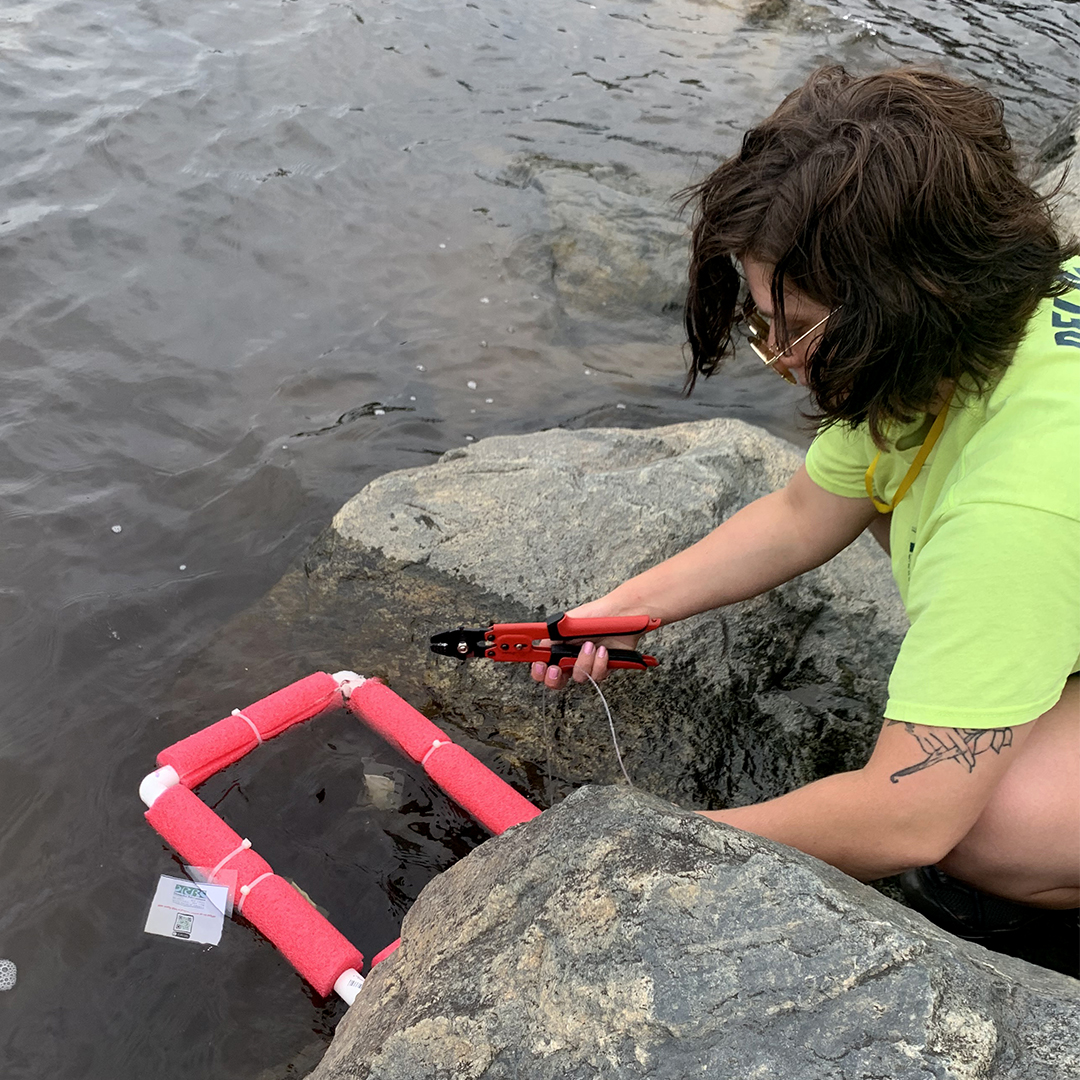Delaware • New Jersey • Pennsylvania
New York • United States of America
- Aquatic Life Designated Use Project
- Bacteria Monitoring
- Biomonitoring Program
- Chlorides Monitoring
- Contaminants of Emerging Concern
- Delaware Estuary Water Quality Monitoring Program
- Dissolved Oxygen and Nutrients
- Modeling
- Other Monitoring (e.g., Toxicity, Fish Tissue, Metals)
- PCBs and PMPs
- Special Protection Waters (SPW)
- Water Resource Data Sets
 |
| DRBC staff preps a SPATT bag set-up to monitor algal concentrations in the Delaware River. Photo by the DRBC. |
Algae are simple, plant-like organisms in aquatic ecosystems that produce food through photosynthesis, forming the base of food webs.
What are Harmful Algal Blooms (HABs)?
HABs occur when colonies of toxin-producing algae rapidly grow due to high nutrient levels, often from agricultural runoff, wastewater and/or warmer temperatures. These blooms can release toxins that can contaminate drinking water sources, becoming a public health concern. In freshwater, cyanobacteria (photosynthetic bacteria) are usually responsible for HABs.
As drinking water intakes are situated along the Delaware River, it is important to understand if, and where, algal cyanotoxins are detected from a human health standpoint.
Using the SPATT (Solid Phase Adsorption Toxins Tracking) methodology, the DRBC is studying the presence/absence of harmful algal blooms (HABs) toxins (anatoxin, microcystins and cylindrospermopsin) in the Delaware River.
2022 Study: August - September
• Tidal Delaware River, 11 sites
• Monitored using SPATT bags, collecting after eight days; a total of three rounds of this was completed
• The Del. Dept. of Natural Resources and Environmental Control (DNREC) lab handled analysis
• Results indicated the presence of microcystin at all sites and anatoxin-a at most sites
2023 Study: August - September
- Non-tidal Delaware River, 15 sites
- Monitored using SPATT bags, collecting after eight days; a total of three rounds of this was completed
- DNREC handed sample analysis
- Results showed the presence of microcystin in the non-tidal sites sampled
There is anecdotal evidence that shallow water (for example, around islands) promotes algal blooms in periods of low flow and high temperature.
Next steps will be to identify cogeners and estimate cyanotoxin concentrations in the mainstem. Goals are to identify harmful cogeners and better quantify concentrations in all seasons.
Copyright © Delaware River Basin Commission,
P.O. Box 7360, West Trenton, NJ 08628-0360
Phone (609)883-9500; Fax (609)883-9522
Thanks to NJ for hosting the DRBC website